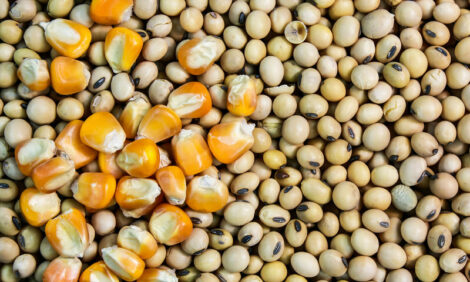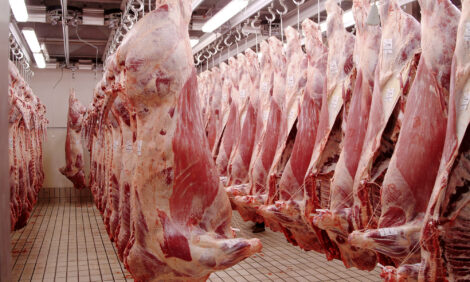



Market Preview: Canada Reports More Slippage
US - Weekly U.S. Market Preview w/e 4th May, provided by Steve R. Meyer, Ph.D., Paragon Economics, Inc.Canada's Hog Statistics report, released late last week, indicates that the Canadian breeding herd continues to decline on a year-over-year basis. The April 1 inventory of breeding animals was 1.612 million head, 1.6% (25,600 head) lower than one year ago (See Figure 1 - below). This is the smallest breeding herd in Canada since the fourth quarter of 2003.
The combined Canadian-U.S. breeding herd stands at 7.6934 million head, just 0.4% larger than one year ago. That herd will have to be much more productive to maintain exports and per capita consumption levels in the coming year. It is doubtful that productivity growth will be that high, given the pressure of higher feed costs on carcass weights. Per capita availability in North America will apparently be supportive to hog prices for the foreseeable future.
Canada's farrowings and pig crop also dropped back below year-earlier levels after having recovered somewhat in the fourth quarter of 2006. I had heard regular reports that Canadian producers had gotten a handle on the disease challenges of 2005 and early 2006, and that productivity was on the rise. These data suggest that while things may be better, they are far from good on this count.
Death and condemnations (a figure reported by Canada, but not by USDA) were estimated to be 629,000 head. That number is 14% lower than one year ago, demonstrating improvement. But it is over 70% higher than the average for the first quarter in the years from 2000 to 2004.
These numbers call into question whether Canada can sustain the higher level of pig exports to the United States for all of 2007. U.S. imports of feeder pigs from Canada have been smaller than one year ago in four of the last five weeks for which we have data (the last being the week ending April 22). And, the year-to-date growth number has fallen to just over 6% after being in double digits in January.
Market hog imports, however, are maintaining a double-digit growth rate vs. 2006, ending the week of April 22 at +11.3% for the year. Given reduction in Canada's slaughter rates and capacity, I fully expect this number to remain large at least until we approach the beginning of mandatory country-of-origin-labeling in September 2008.
Melamine Fallout
The melamine contamination issue in the United States still has some potential for damage, but it does not appear to be attracting much attention from export customers. USDA and the U.S. Food and Drug Administration have now determined that about 2.7 million broilers and 100,000 breeding chickens in Indiana, as well as roughly 6,000 pigs in seven states received feed that contained waste pet food that included vegetable protein to which melamine had been added. I fear that those numbers will grow, given that this practice of mixing melamine into feed is widespread in China. The melamine increases nitrogen content and thus makes protein content appear higher though the nitrogen is not digestible.
Unlike the original issue with pets, there have been no reports of pig or chicken deaths and there is still no proof that pigs or chickens even absorb the melamine. It has only been found in the feed and in the urine of the animals.
The problem now is that the melamine is considered an adulterant, and U.S. law forbids the federal agencies from allowing animals that have been fed adulterated feed from entering the food supply. The 2.7 million broilers had already been marketed when the contamination was discovered, but the breeding chickens and pigs are being held on farms awaiting depopulation. USDA has promised to indemnify the producers for the lost value, but the administrative methods of getting that accomplished are not clear.
I have to think USDA will move more quickly in the case of a contagious disease, but this would have been a pretty good practice run. Indemnification and swift action are critical in these situations to encourage producers to be forthcoming about problems and to encourage the proper treatment of the animals. It would be easy to cut one's losses by reducing or withholding feed in these situations. I hope I don't know anyone who would actually do that, but properly designed and quickly administered indemnification programs can certainly reduce the possibility.
Corn Planting Progress
Finally, corn planting is progressing at a very slow pace so far this year. Last Monday's Crop Progress report from USDA showed only 23% of corn acres had been planted as of April 29. That compares to 52% last year and an average of 42% over the period 2002-2006 (see Figure 4). We must also remember that this is a percentage of a much larger number (90.5 vs. 78.3 million acres) than last year, thus leaving far more acres yet to be planted. To be exact, these numbers imply that as of April 29, we still need to plant 69.7 million acres of corn! Things aren't critical yet, but each day gets us one step closer.












